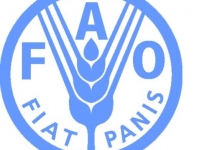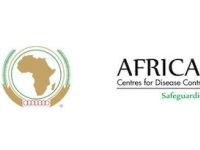News
Migrant workers and remittances in the context of COVID 19 in sub-Saharan Africa
Reoprted by FAO

COVID-19 Logo (Source: Health Ministry)
USPA NEWS -
“¢ African migrants stimulate economic growth and development in areas of destination, transit and origin through their labour, skills transfer, consumption and investments. Their remittances also make significant contributions to food security, human capital, rural development and overall Gross Domestic Product (GDP) in areas of origin.
“¢ The impact of COVID-19 affects migrant workers disproportionally. Often precarious working conditions and overcrowded living and transport arrangements increase their vulnerability to contagion and loss of employment, threatening their health and livelihoods. Those working under informal arrangements, commonly in the agriculture sector, are largely excluded from accessing real-time reliable information, social protection, healthcare and government response measures.
“¢ Urban-to-rural return migration increases due to lockdowns and job losses in cities. This context poses challenges and opportunities in rural sectors, while many return migrants face stigmatization as potential carriers of the virus.
“¢ The impact of COVID-19 affects migrant workers disproportionally. Often precarious working conditions and overcrowded living and transport arrangements increase their vulnerability to contagion and loss of employment, threatening their health and livelihoods. Those working under informal arrangements, commonly in the agriculture sector, are largely excluded from accessing real-time reliable information, social protection, healthcare and government response measures.
“¢ Urban-to-rural return migration increases due to lockdowns and job losses in cities. This context poses challenges and opportunities in rural sectors, while many return migrants face stigmatization as potential carriers of the virus.
“¢ African migrants stimulate economic growth and development in areas of destination, transit and origin through their labour, skills transfer, consumption and investments. Their remittances also make significant contributions to food security, human capital, rural development and overall Gross Domestic Product (GDP) in areas of origin.------------------------------------
“¢ The impact of COVID-19 affects migrant workers disproportionally. Often precarious working conditions and overcrowded living and transport arrangements increase their vulnerability to contagion and loss of employment, threatening their health and livelihoods. Those working under informal arrangements, commonly in the agriculture sector, are largely excluded from accessing real-time reliable information, social protection, healthcare and government response measures.------------------------
“¢ Urban-to-rural return migration increases due to lockdowns and job losses in cities. This context poses challenges and opportunities in rural sectors, while many return migrants face stigmatization as potential carriers of the virus.-------------------
“¢ A 23 percent decline in remittances flow into sub-Saharan Africa (SSA), as a result of economic downturns, restrictions in movement and challenges sending transfers to SSA, is expected to heavily impact the livelihoods of households and countries that rely on them for food and other basic expenditures, such as health and education.------------------------------------------------
“¢ The safe movement of workers in the agrifood system within and between countries should be facilitated, recognizing their vital contribution to food security. To this end, occupational safety and health measures should be put in place in the workplace, housing and transportation means, working visas extended, and temporary work permits conceded.
“¢ The inclusion of migrants, regardless of their work or migratory status, in COVID-19 socioeconomic impact assessments, response and recovery plans (including social protection programmes) will reduce the risk of transmission for the entire population while safeguarding the livelihoods of many households falling into poverty as a result of the pandemic. The “leave no one behind“ approach takes a public-health dimension in addition to a human-rights one.----------------------------------------
“¢ Coordinated, multisectoral and multilevel responses that are migrant-sensitive in their design and include the perspective of migrant associations and diaspora, in addition to responses from governments, the private sector and producer organizations, should be developed in the region to ensure sustainable policies that go beyond the crisis and build back better. Such interventions should be gender-sensitive and tailored to specific country contexts (For a global analysis see: FAO. 2020. Migrant workers and the COVID-19 pandemic.) Source: Apo, FAO
Liability for this article lies with the author, who also holds the copyright. Editorial content from USPA may be quoted on other websites as long as the quote comprises no more than 5% of the entire text, is marked as such and the source is named (via hyperlink).







